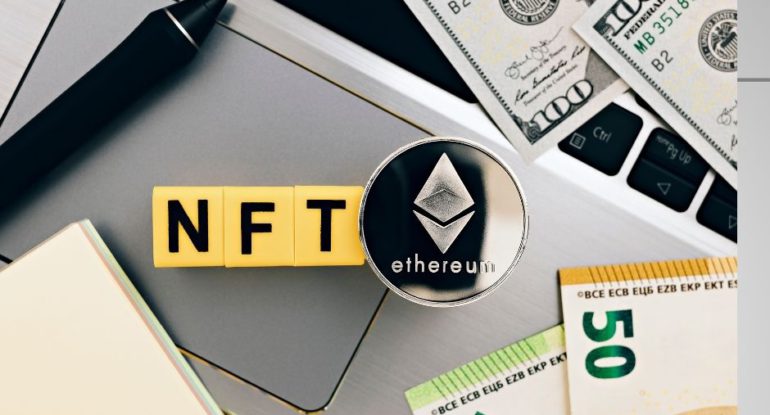What Are NFT Royalties And How Does It Work?

One of the key tools in the larger financial environment has been the payment of royalties, sometimes known as royalties. Payments made by one party to another for using the latter’s assets are known as royalties. For instance, musicians sometimes pay a set amount of money to have their songs played on radio stations, internet streaming services, or by other musicians. How can an introduction to NFT royalties for beginners be useful in these circumstances?
What effects do NFTs have on royalties, and what are the underlying mechanisms? With an introduction to NFT royalties and their work, the discussion that follows tries to provide a solution. It’s interesting to note that non-fungible tokens have provided important benefits for addressing the drawbacks of traditional royalty payment schemes. Students might also point out their advantages and the economics that support NFT royalties.
What is an NFT Royalty?
You must concentrate on the definition of NFT royalties before looking for any examples. What do NFT royalties entail, and how do they differ from traditional royalties? When a digital asset they created is sold on the secondary market, NFT royalties are given to the original inventor.
The guidelines for royalty payments with an NFT are written on smart contracts that are available on blockchain networks. The smart contract will designate a specific portion of the proceeds from the secondary sale of the NFT as a royalty payment to the creator. During the minting process, creators might choose the percentage of the royalty payout.
The “Crossroads” NFT by Beeple is one of the most well-known examples of passive income based on NFT royalties percentage. The creator got 10% of the sale price as a royalty payment when the NFT was resold on the secondary market for about $6.6 million. You can see how NFT royalties provide a potent tool for the monetization of various works of art as a result.
🚨 MINTING IS LIVE 🚨
THE BIGGEST MUSIC NFT PROJECT of 2022:
🎵 ~4000 songs (all 1/1)
✍️ A DAO + legal co-op that owns royalty revenue
🎨 Each song comes w generative visual art
🤯 Guinness World Record holder
🤓 Beeple of musicmint now: https://t.co/YLtplajTcD pic.twitter.com/sQpXP7lItT
— songadaymann.lens (@songadaymann) December 31, 2021
Why Are NFT Royalties Required?
Every new technical advancement highlights the rationale for its introduction. Why do people require NFT royalties? With the help of social media and online exposure, artists might have discovered a new and broader audience for their work. It’s also crucial to realize that to support themselves, artists and content creators must constantly produce new work.
NFT royalties were introduced as a response to these problems for artists looking for long-term business plans. Every time the question “how do NFT royalties operate” is answered, a justification for their creation must come first. What issues are behind the renewed interest in NFT royalties?
Composers, songwriters, novelists, producers, and nearly anybody involved in the creative process must fight for proper recompense, which is a challenge for artists in almost every industry. For instance, many artists are required to consent to the use of their work by streaming services in exchange for a meagre royalty pay. Once a work of art is sold, the artist loses all control over any further sales or royalties.
Beginners’ guide to NFT royalties would emphasize how they return control to the hands of the creators. In 1963, Harvey Ball, the well-known designer of the yellow smiling face, only received $45 for his creation. The iconic yellow smiley face was sold by the t-shirt firm that used it for almost $500,000,000 in 2000, nearly 40 years after it was first used.
Robert Rauschenberg is another illustration of how an artist’s work gets underappreciated. A picture by Robert that was purchased in 1958 for $900 was later sold for $85,000. As you can see, Harvey and Robert might have been able to profit from the secondary sales if they had been granted resale royalty rights. NFT royalties can thus provide artists with a flexible means of obtaining resale compensation.
Also, read – Where Do All The Top NFT Marketplaces Stand On Creator NFT Royalties
Utilizing NFT Royalties
The requirement well demonstrates the importance of NFT royalty payments for music NFT royalties as well as royalty payments for other artists. NFT royalties operate in accordance with smart contracts that specify the portion of royalty payments from secondary sales. The smart contract guarantees the automation of royalty payments by enforcing the guidelines established for each NFT secondary sale.
Smart contracts confirm the secondary sale, reserve a portion of the sale as a royalty payment, and then pay the creator with that portion of the sale. Additionally, there are no middlemen overseeing the non-fungible token royalty payments. In addition, the procedure of royalty payments was not subject to interference by secondary sellers or buyers.
The most crucial thing to keep in mind is that not all NFTs are eligible for royalties. In response to the question “How do NFT royalties work?” it would be emphasized how important it is to include the terms for royalties in the NFT smart contracts. Only if the terms are explicitly stated in smart contracts may you benefit from royalties on secondary NFT sales. For digital material, in-game items and collectables, tangible gaming accessories, and other assets, non-fungible token royalty payments are relevant.
For many content producers and artists, royalties with non-fungible tokens are a key selling point. However, the marketplaces—which can support a variety of royalty systems—are the most important factor in how NFT royalties are operated. New marketplaces, like Bluebox, use distinctly novel strategies to enable improved rewards for content creators.




























































